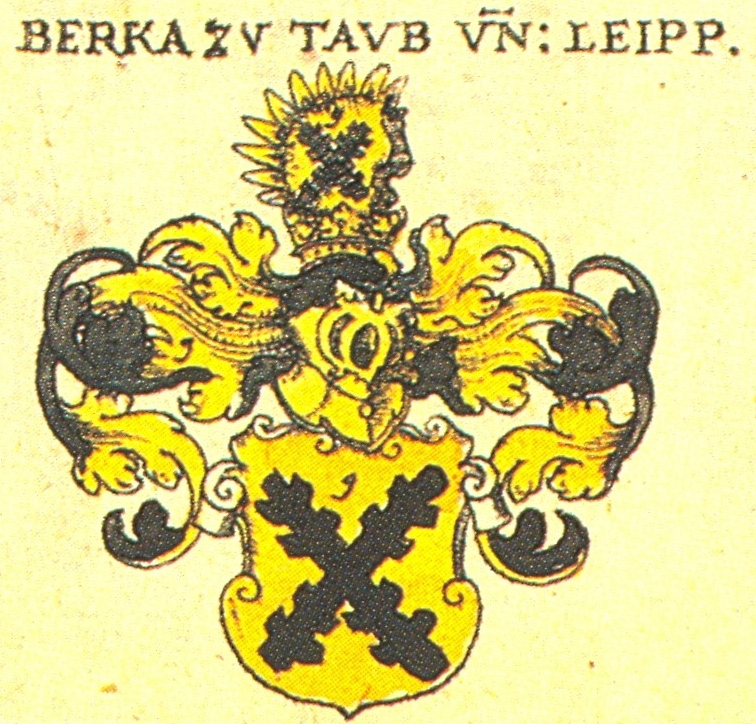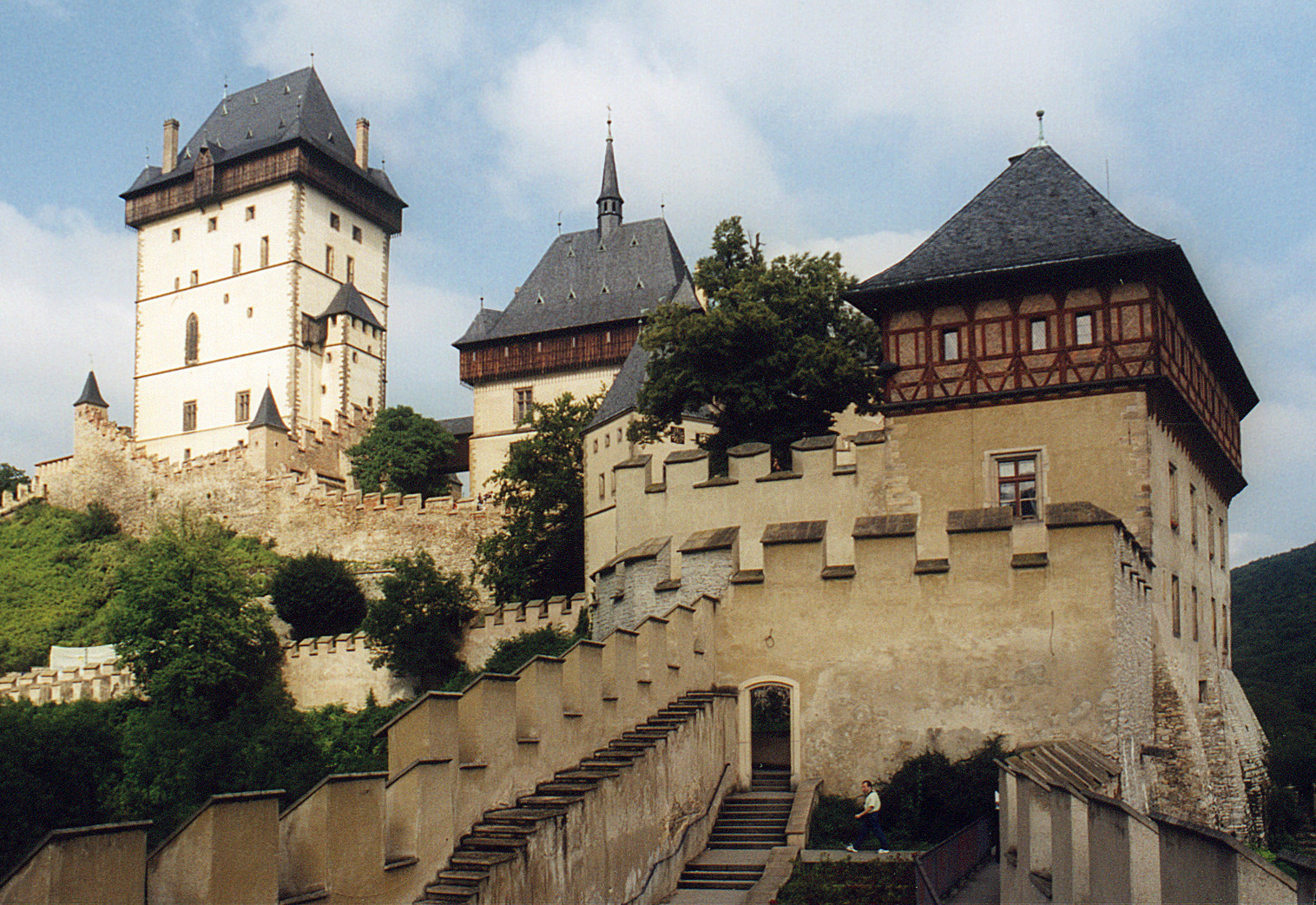|
Stránov
Stránov is castle in Jizerní Vtelno in the Central Bohemian Region of the Czech Republic. The original Middle Ages castle was reconstructed by Joseph Schulz to the Renaissance Revival architecture, Neo-Renaissance look it has today. History In place of the present castle originally stood a wooden fortress, which is noted in 1429 by lord Bohuněk of Stránov. A solid Gothic architecture, Gothic castle Nový Stránov ('new Stránov') was built on its site by Jaroš of Sovojovice in 1463–1468. From 1545 to 1589 the castle was owned by the Berka of Dubá family. In 1589, Karel of Bieberstein, the Imperial Council and the highest mint master Kingdom of Bohemia, acquired the castle. Later the castle belonged to Michael Slavata from Chlum. During the rule of the family Bieberstein or Slavata, the castle was rebuilt in the Renaissance style. Around 1642, the owner became the nobleman Jan of Lisov. Later Jan's son, Rudolf Adam of Lisov, lived in the castle with his wife Elizabeth Li ... [...More Info...] [...Related Items...] OR: [Wikipedia] [Google] [Baidu] |
Jizerní Vtelno
Jizerní Vtelno is a municipality and village in Mladá Boleslav District in the Central Bohemian Region of the Czech Republic. It has about 400 inhabitants. Etymology The name Vtelno is derived from ''vetla'', which is an old Slavic word for 'willow'. Geography Jizerní Vtelno is located about southwest of Mladá Boleslav and northeast of Prague. It lies in the Jizera Table. The municipality is situated on the right bank of the Jizera River, which forms the eastern municipal border. History The first written mention of Jizerní Vtelno is from 1229. It belonged to the Stránov estate that was controlled from the castle adjacent to the village. Among the most notable owners of the estate were the Berka of Dubá family, the Bieberstein family, and the Slavata of Chlum family, who had the local castle rebuilt in the first half of the 17th century. Demographics Transport The I/16 road, which connects the D10 motorway with Mělník Mělník (; ) is a town in the Central Boh ... [...More Info...] [...Related Items...] OR: [Wikipedia] [Google] [Baidu] |
Berka Of Dubá
Berka of Dubá () was a cadet branch of a Bohemian noble family of Lords of Dubá established by Hynek Berka of Dubá (1249–1306). It held estates in what is today the Czech Republic and Saxony in Germany throughout the Middle Ages. Ancestors This old Czech family separated from the family of the lords of Dubé and are thus one of the lines of the :de:Ronow (Adelsgeschlecht), Ronows. The Ronows derive their origin from Smil from Tuháně from the end of the 12th century. His sons Jindřich and Častolov are mentioned in the first half of the 13th century as brothers from Tuhán and Žitava, who acquired the region in the north from the monarch. They and their sons founded other family branches, e.g. the lords of Klinštejn, the lords of Lipá, the Lichtenburks and the lords of Duba (Berkov, Adršpach, Škop). The majority of the Ronians supported the king militarily and also obtained property, titles, and important positions in the kingdom for this. As regards the Berka from D ... [...More Info...] [...Related Items...] OR: [Wikipedia] [Google] [Baidu] |
Renaissance Revival Architecture In The Czech Republic
The Renaissance ( , ) is a period of history and a European cultural movement covering the 15th and 16th centuries. It marked the transition from the Middle Ages to modernity and was characterized by an effort to revive and surpass the ideas and achievements of classical antiquity. Associated with great social change in most fields and disciplines, including art, architecture, politics, literature, exploration and science, the Renaissance was first centered in the Republic of Florence, then spread to the rest of Italy and later throughout Europe. The term ''rinascita'' ("rebirth") first appeared in ''Lives of the Artists'' () by Giorgio Vasari, while the corresponding French word was adopted into English as the term for this period during the 1830s. The Renaissance's intellectual basis was founded in its version of humanism, derived from the concept of Roman and the rediscovery of classical Greek philosophy, such as that of Protagoras, who said that "man is the measure of ... [...More Info...] [...Related Items...] OR: [Wikipedia] [Google] [Baidu] |
Castles In The Czech Republic ...
This is a list of castles and chateaux in the Czech Republic, organized by regions. Central Bohemia (S) Hradec Králové (H) Karlovy Vary (K) Liberec (L) Moravia-Silesia (T) Olomouc (M) Pardubice (E) Plzeň (P) Prague (A) South Bohemia (C) South Moravia (B) Ústí nad Labem (U) Vysočina (J) Zlín (Z) Notes See also * List of castles in Europe * List of castles External links Czech Republic - Manors, Castles, Historical TownsHrady.cz {{Châteaux Czech Republic Castles A castle is a type of fortified structure built during the Middle Ages predominantly by the nobility or royalty and by military orders. Scholars usually consider a ''castle'' to be the private fortified residence of a lord or noble. This i ... [...More Info...] [...Related Items...] OR: [Wikipedia] [Google] [Baidu] |
Castles In The Central Bohemian Region
A castle is a type of fortification, fortified structure built during the Middle Ages predominantly by the nobility or royalty and by Military order (monastic society), military orders. Scholars usually consider a ''castle'' to be the private fortified house, fortified residence of a lord or noble. This is distinct from a mansion, palace, and villa, whose main purpose was exclusively for ''pleasance'' and are not primarily fortresses but may be fortified. Use of the term has varied over time and, sometimes, has also been applied to structures such as hill forts and 19th- and 20th-century homes built to resemble castles. Over the Middle Ages, when genuine castles were built, they took on a great many forms with many different features, although some, such as curtain wall (fortification), curtain walls, arrowslits, and portcullises, were commonplace. European-style castles originated in the 9th and 10th centuries after the fall of the Carolingian Empire, which resulted ... [...More Info...] [...Related Items...] OR: [Wikipedia] [Google] [Baidu] |
Children's Home
Residential child care communities or children's homes are a type of residential care, which refers to long-term care given to children who cannot stay in their birth family home. There are two different approaches towards residential care: The family model (using married couples who live with a certain number of children) and the shift care model. It is part of the foster care system and combine several aspects of ways and means to raise a child. A community (origin: Latin ''communis'', "shared in common") is a social unit of people who share e.g. norms, religion, values or identity. It is often tied to a specific geographic or virtual area. Residential child care communities operate on one or more than one campus, which connects the different units within the program. House parents/ social workers, therapists, caseworkers, teachers, management staff members as well as other staff members that contribute to the program of the specific organization cooperate to ensure a positive en ... [...More Info...] [...Related Items...] OR: [Wikipedia] [Google] [Baidu] |
Nationalized
Nationalization (nationalisation in British English) is the process of transforming privately owned assets into public assets by bringing them under the public ownership of a national government or state. Nationalization contrasts with privatization and with demutualization. When previously nationalized assets are privatized and subsequently returned to public ownership at a later stage, they are said to have undergone renationalization (or deprivatization). Industries often subject to nationalization include telecommunications, electric power, fossil fuels, railways, airlines, iron ore, media, postal services, banks, and water (sometimes called the commanding heights of the economy), and in many jurisdictions such entities have no history of private ownership. Nationalization may occur with or without financial compensation to the former owners. Nationalization is distinguished from property redistribution in that the government retains control of nationalized property. S ... [...More Info...] [...Related Items...] OR: [Wikipedia] [Google] [Baidu] |
Škoda Works
The Škoda Works (, ) was one of the largest European industrial conglomerates of the 20th century. In 1859, Czech engineer Emil Škoda bought a foundry and machine factory in Plzeň, Bohemia, Austria-Hungary that had been established ten years previously, founding Škoda Works. By World War I, Škoda Works had become the largest arms manufacturer in Austria-Hungary, supplying the Austro-Hungarian army with mountain guns, mortars and machine guns, including the Škoda M1909, and the ships of the Austro-Hungarian navy with heavy guns. After the war and the creation of the First Czechoslovak Republic, the company, previously focusing on the manufacturing of armaments, diversified and became a major manufacturer of locomotives, aircraft, ships, machine tools, steam turbines, equipment for power utilities, among other industrial products. The deteriorating political situation in Europe by the latter half of the interwar period eventually led to a renewed focus on armament ... [...More Info...] [...Related Items...] OR: [Wikipedia] [Google] [Baidu] |
Gothic Architecture
Gothic architecture is an architectural style that was prevalent in Europe from the late 12th to the 16th century, during the High Middle Ages, High and Late Middle Ages, surviving into the 17th and 18th centuries in some areas. It evolved from Romanesque architecture and was succeeded by Renaissance architecture. It originated in the Île-de-France and Picardy regions of northern France. The style at the time was sometimes known as ''opus Francigenum'' (); the term ''Gothic'' was first applied contemptuously during the later Renaissance, by those ambitious to revive the Classical architecture, architecture of classical antiquity. The defining design element of Gothic architecture is the Pointed arch (architecture), pointed arch. The use of the pointed arch in turn led to the development of the pointed rib vault and flying buttresses, combined with elaborate tracery and stained glass windows. At the Abbey of Basilica of Saint-Denis, Saint-Denis, near Paris, the choir was rec ... [...More Info...] [...Related Items...] OR: [Wikipedia] [Google] [Baidu] |
Fortress
A fortification (also called a fort, fortress, fastness, or stronghold) is a military construction designed for the defense of territories in warfare, and is used to establish rule in a region during peacetime. The term is derived from Latin ("strong") and ("to make"). From very early history to modern times, defensive walls have often been necessary for cities to survive in an ever-changing world of invasion and conquest. Some settlements in the Indus Valley Civilization were the first small cities to be fortified. In ancient Greece, large cyclopean stone walls fitted without mortar had been built in Mycenaean Greece, such as the ancient site of Mycenae. A Greek '' phrourion'' was a fortified collection of buildings used as a military garrison, and is the equivalent of the Roman castellum or fortress. These constructions mainly served the purpose of a watch tower, to guard certain roads, passes, and borders. Though smaller than a real fortress, they acted as ... [...More Info...] [...Related Items...] OR: [Wikipedia] [Google] [Baidu] |







